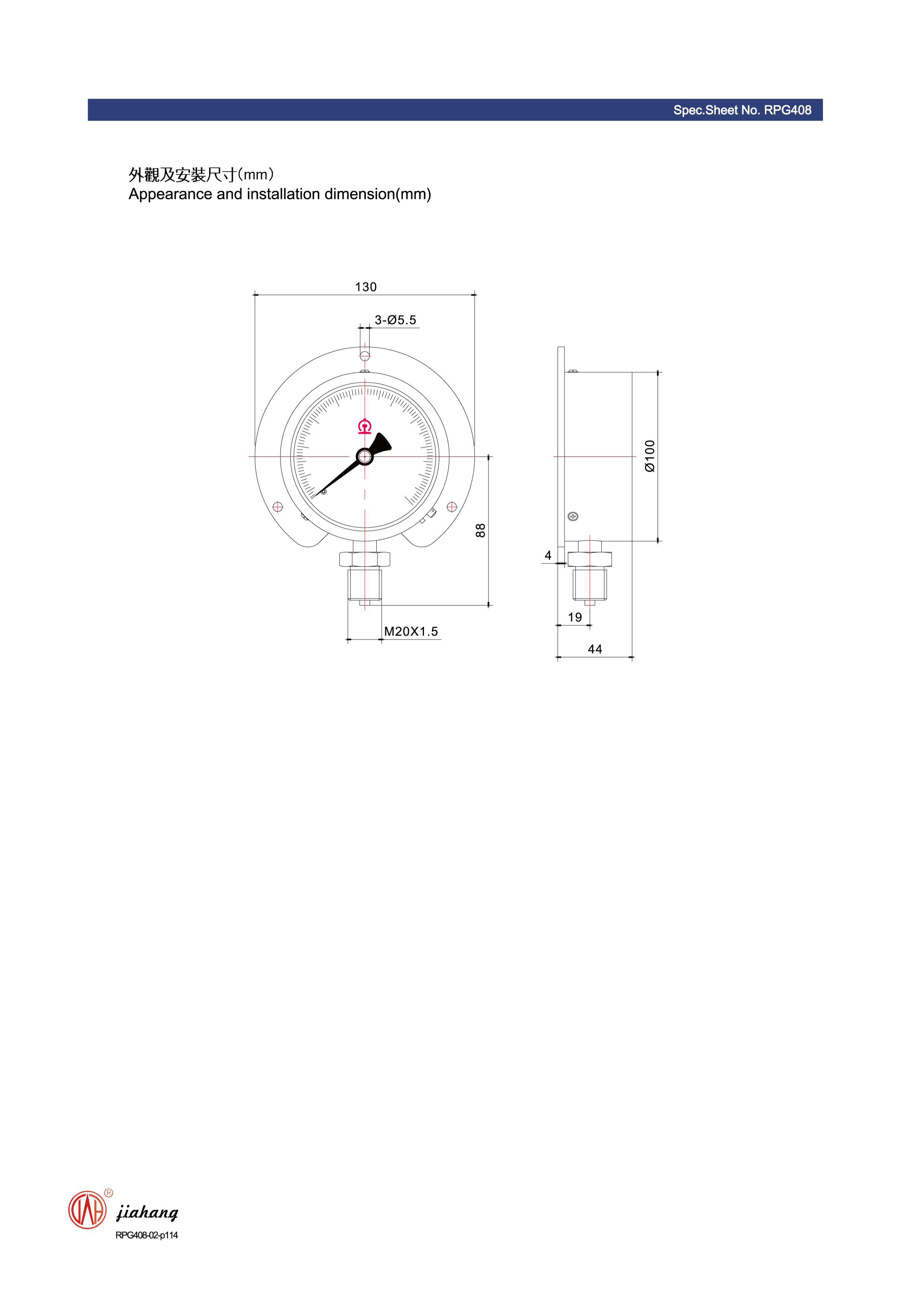
Agu . 21, 2024 13:23 Back to list
Capillary Diaphragm Seal Pressure Gauges for Reliable Industrial Measurement Solutions
Understanding Capillary Diaphragm Seal Pressure Gauges An Overview of Function and Manufacturing
In various industrial applications, accurate pressure measurement is crucial for maintaining optimal operational efficiency and safety. Among different pressure measurement devices, the capillary diaphragm seal pressure gauge has gained prominence due to its reliability and adaptability in challenging environments. This article delves into the functionality, advantages, and production processes of capillary diaphragm seal pressure gauges, especially from a factory perspective.
What is a Capillary Diaphragm Seal Pressure Gauge?
A capillary diaphragm seal pressure gauge consists of a diaphragm and a capillary tube that connects the diaphragm to the measuring gauge. The diaphragm is a thin flexible membrane that responds to changes in pressure from the process fluid. When the fluid pressure changes, the diaphragm deflects, which in turn transmits the force through the capillary tube to the pressure gauge, resulting in a readable pressure measurement.
The design of the diaphragm seal is particularly beneficial in scenarios where the pressure measurement needs to be taken in environments that may be hostile to traditional gauges. For instance, in the presence of corrosive fluids or high temperatures, diaphragm seals act as a protective barrier, ensuring that the gauge remains unaffected by the process medium.
Advantages of Capillary Diaphragm Seal Pressure Gauges
1. Protection from Corrosive Substances The diaphragm seal protects the pressure gauge from harsh chemicals and corrosive fluids, prolonging the lifespan of the instrument.
2. High Sensitivity and Accuracy Capillary pressure gauges are known for their high sensitivity and can provide precise readings even at low pressures.
3. Flexibility in Installation The capillary tube allows for flexible installation options, letting the gauge be placed in a more accessible location away from the harsh operating environment.
capillary diaphragm seal pressure gauge factory

Manufacturing Process of Capillary Diaphragm Seal Pressure Gauges
The manufacturing of capillary diaphragm seal pressure gauges involves a series of intricate processes that ensure their durability and effectiveness. Here’s a look at the typical steps involved
1. Material Selection The first step in the manufacturing process is selecting appropriate materials. Stainless steel is commonly used for diaphragm seals due to its resistance to corrosion. In some cases, more specialized materials may be utilized depending on the specific application requirements.
2. Diaphragm Fabrication The diaphragm is produced using precision machining techniques to ensure consistent thickness and responsiveness. This step is crucial as the diaphragm's performance directly affects measurement accuracy.
3. Capillary Tube Creation The capillary tube is manufactured with precise dimensions to maintain the integrity of pressure transmission. The size and length of the tube can be customized based on the specific installation requirements.
4. Assembly Once the individual components are fabricated, they are assembled with care. This often involves welding or sealing processes that ensure a leak-proof connection between the diaphragm, capillary tube, and pressure gauge.
5. Calibration After assembly, each pressure gauge undergoes rigorous testing and calibration to ensure accuracy. This step is vital for ensuring reliability in real-world applications.
6. Quality Assurance Finally, comprehensive quality checks are performed to ensure that the gauges meet industry standards. This includes testing for pressure response, durability, and resistance to environmental conditions.
Conclusion
Capillary diaphragm seal pressure gauges serve as an invaluable asset in various industrial sectors, playing a pivotal role in ensuring safety and efficiency in operations. With their robust design and innovative manufacturing processes, these gauges represent the forefront of pressure measurement technology. As industries continue to evolve, the importance of reliable and accurate pressure measurement will only increase, underscoring the significance of capillary diaphragm seal pressure gauges in modern industrial applications.
-
High-Precision 5 Valve Manifold Differential Pressure Gauge Suppliers
NewsApr.29,2025
-
High-Precision Diaphragm Vacuum Pressure Gauges Manufacturers & Quotes
NewsApr.29,2025
-
Omega Differential Pressure Gauges High Accuracy & Durability
NewsApr.28,2025
-
Low Pressure Differential Pressure Gauges Precision Solutions & Quotes
NewsApr.28,2025
-
Digital Diaphragm Pressure Gaauge Precision Measurement & OEM Quotes
NewsApr.28,2025
-
Differential Pressure Gauge China Price High-Accuracy & Best Quotes
NewsApr.28,2025
